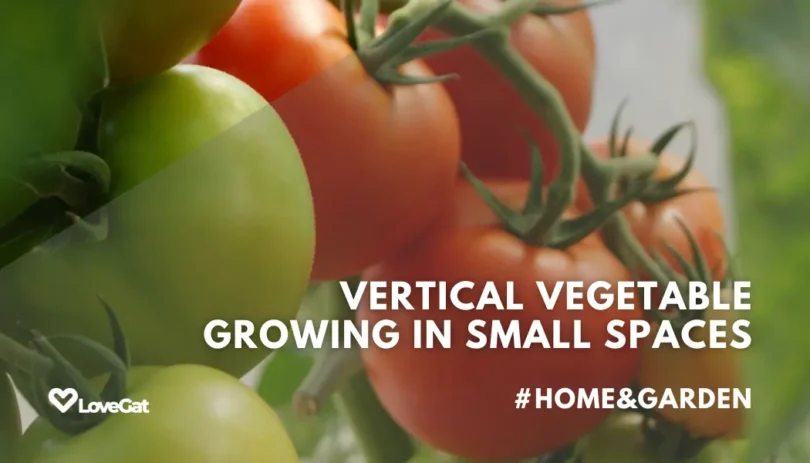Exploring Techniques for Growing Vegetables Vertically in Limited Space!
Maximizing space efficiency is essential for urban gardeners or those with limited gardening space. Vertical gardening offers a practical solution, allowing you to grow a variety of vegetables upwardrather than ooutwardIn this comprehensive guide, we’ll delve deep into the world of vertical gardening, exploring various techniques, benefits, and tips to help you create a thriving vertical garden that yields abundant harvests.
Benefits of Vertical Gardening
Before delving into techniques, let’s first understand the benefits of vertical gardening:
- Space Efficiency: Vertical gardening maximizes available space, making it ideal for small yards, balconies, or even indoor spaces.
- Increased Yield: By growing vegetables vertically, you can plant more in less space, leading to higher yields per square foot.
- Improved Air Circulation: Vertical gardening allows for better air circulation around plants, reducing the risk of diseases and pests.
- Aesthetic Appeal: Vertical gardens can serve as attractive focal points in your outdoor or indoor space, adding visual interest and beauty.
Techniques for Vertical Gardening
Now, let’s explore some techniques for growing vegetables vertically:
1. Trellising
Trellising is a popular vertical gardening technique that involves supporting vining vegetables such as tomatoes, cucumbers, and beans with sturdy trellises or stakes. Install trellises or stakes in your garden bed or container and train the plants to climb upwards as they grow. This technique not only saves space but also promotes better air circulation and easier harvesting.
2. Vertical Towers
Vertical towers or garden columns are another effective way to grow vegetables vertically in limited space. These freestanding structures feature multiple planting pockets or tiers, allowing you to grow a variety of vegetables in a compact footprint. Vertical towers are particularly well-suited for salad greens, herbs, and compact root vegetables like radishes and carrots.
3. Wall-Mounted Planters
Wall-mounted planters are perfect for vertical gardening on balconies, patios, or indoor spaces with limited floor space. Install wall-mounted planters on sturdy surfaces such as walls or fences and fill them with soil to create a vertical growing space. Choose shallow-rooted vegetables such as lettuce, spinach, or herbs that thrive in the confined space of a planter.
4. Hanging Baskets
Hanging baskets offer a versatile vertical gardening option for trailing or cascading vegetables such as cherry tomatoes, strawberries, and trailing squash. Hang baskets from overhead supports such as pergolas, trellises, or garden hooks and fill them with well-draining potting mix. Ensure adequate support for heavy-fruited vegetables and water regularly to prevent drying out.
5. Espalier
Espalier is a traditional gardening technique that involves training fruit trees or shrubs to grow flat against a wall or trellis in a horizontal or diagonal pattern. While typically used for fruit trees, espalier can also be adapted for growing vegetables such as cucumbers, squash, and melons. Prune and train the plants regularly to maintain the desired shape and encourage fruit production.
Tips for Success
To ensure success with your vertical garden, consider the following tips:
- Choose the Right Vegetables: Select vegetables that are well-suited for vertical growing and match your space, climate, and preferences.
- Provide Adequate Support: Ensure that your vertical structures are sturdy and provide adequate support for growing plants, especially heavy-fruited varieties.
- Monitor Watering Needs: Vertical gardens may require more frequent watering due to increased exposure to sunlight and wind. Monitor soil moisture levels regularly and water as needed to keep plants healthy.
- Regular Maintenance: To keep your vertical garden thriving, make sure to prune, train, and harvest regularly. This fosters healthy growth and avoids overcrowding.
- Experiment and Have Fun: Vertical gardening offers endless possibilities for creativity and experimentation. Don’t be afraid to try new techniques, plants, and designs to find what works best for your space and preferences.
Vertical gardening is a versatile and practical way to grow vegetables in limited space, offering numerous benefits and opportunities for creativity. Whether you choose trellising, vertical towers, wall-mounted planters, hanging baskets, or espalier, the key is to adapt the technique to suit your space and vegetable preferences.
By following the techniques, tips, and guidance outlined in this guide, you can create a thriving vertical garden that not only saves space but also adds beauty, productivity, and freshness to your outdoor or indoor space. Happy gardening!
You Might Also Like
- How I used AI to create a living data visualization for our home
- 20 Cool Home Decor And Designs For Any Style
- Planning a garden? Here’s a step-by-step guide to start off on the right foot
Social Media Communities
Share your digital nomad experiences and connect with fellow Us:
- Instagram: @Lovegatofficial
- Facebook: @LoveGat
Your journey doesn’t end here. Continue to explore and share our Decor & Home Posts.







